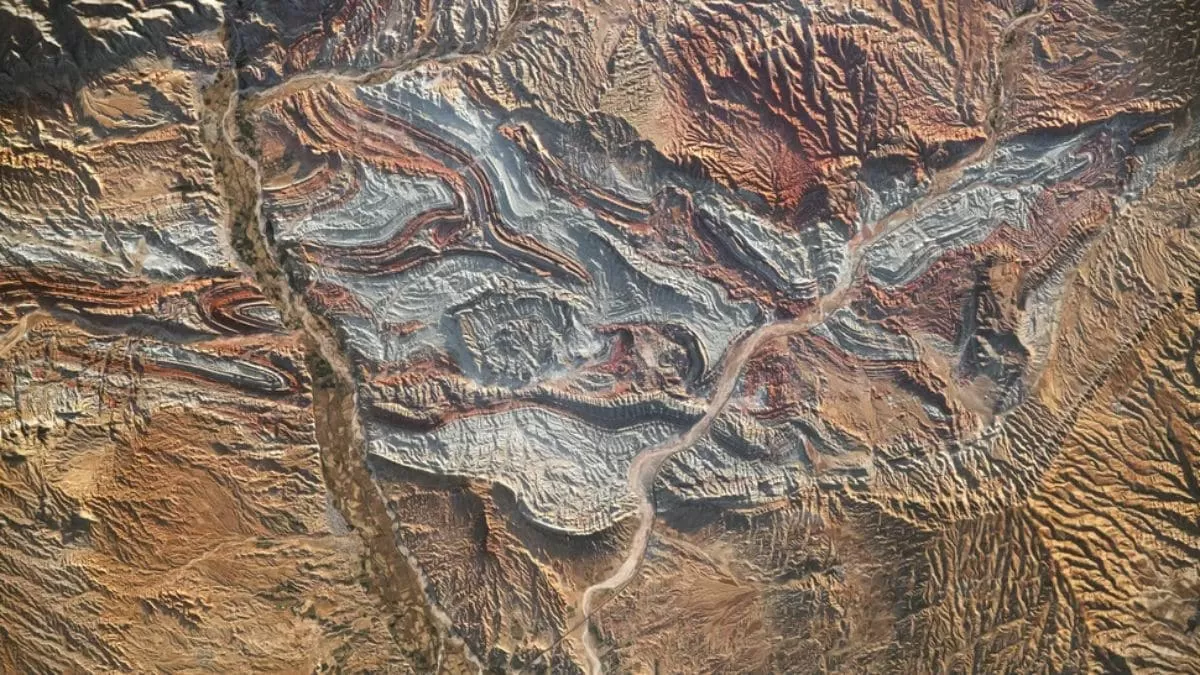Iran is a land rich in history, culture, and natural wonders. One of the most spectacular and awe-inspiring natural formations in Iran is the Zagros Mountains. Stretching over 1,500 kilometers from northwest to southeast, the Zagros Mountains are a marvel of geology, formed by the collision of the Arabian and Eurasian tectonic plates. These majestic mountains not only offer breathtaking views from space but also provide valuable insights into the Earth’s ongoing structural evolution.
The Zagros Mountains have been shaped by the slow-motion collision of two immense landmasses over millions of years. As the Arabian and Eurasian plates collided, the continental crust crumbled, and the once-flat sedimentary layers were pushed upwards to form the Zagros mountain range. The result is a stunning display of tightly folded rock layers that can be seen from space, a testament to the immense forces at play in the natural world.
The Zagros Mountains showcase the raw power of continental tectonics and provide scientists with a unique opportunity to study and understand mountain formation. The intricate geological structures of the Zagros Mountains are a result of the intense pressure and heat generated by the colliding plates. The slow but constant movement of these plates continues to shape the mountains, providing a window into Earth’s ongoing structural evolution.
One of the most striking features of the Zagros Mountains is the presence of folds and faults that run parallel to the range’s length. These folds and faults have created a series of ridges and valleys, giving the mountains their distinctive appearance. The tallest peak in the range, Mount Dena, reaches an impressive height of 4,409 meters and is a popular destination for hikers, offering stunning views of the surrounding landscapes.
Apart from their geological significance, the Zagros Mountains also have a rich cultural heritage. Dating back to ancient times, the mountains have been a vital source of water, food, and shelter for the people living in the region. The mountain range is home to several nomadic tribes, who have learned to adapt to the harsh conditions and continue to live a traditional way of life to this day.
The Zagros Mountains are also prone to seismic activity, with frequent earthquakes occurring due to the ongoing tectonic activities. While these earthquakes can cause significant damage and devastation, they also provide scientists with valuable data and insights into the Earth’s crust and seismic activity. Researchers study the seismic patterns and movements of the Zagros Mountains to better understand how geological structures respond to tectonic pressure and how these events can affect human settlements in the region.
Furthermore, the Zagros Mountains are a vital source of natural resources, including oil, gas, and minerals. The mountains are home to some of the world’s largest oil and gas fields, making them a significant economic asset for Iran. The extraction of these resources has also provided scientists with the opportunity to study the geological structures below the mountains, revealing even more information about Earth’s structural evolution.
In addition to their scientific, cultural, and economic significance, the Zagros Mountains also attract tourists from all over the world. Visitors are drawn to the region’s stunning natural beauty, with its snow-capped peaks, lush valleys, and ancient villages. The mountains offer a variety of activities for adventure seekers, from trekking and hiking to skiing and rock climbing. The Zagros Mountains also boast a diverse range of flora and fauna, with some species endemic to the region, making it a haven for nature lovers.
In conclusion, the Zagros Mountains in Iran are a testament to the raw power of continental tectonics and provide a unique opportunity for scientists to study and understand the Earth’s ongoing structural evolution. These mountains showcase tightly folded rock layers caused by the collision of the Arabian and Eurasian plates, offering valuable insights into mountain formation, seismic activity, and the history of our planet. From their geological significance to their cultural heritage and natural beauty, the Zagros Mountains are a true wonder of the world and a must-visit destination for anyone seeking to witness the miracle of nature.







